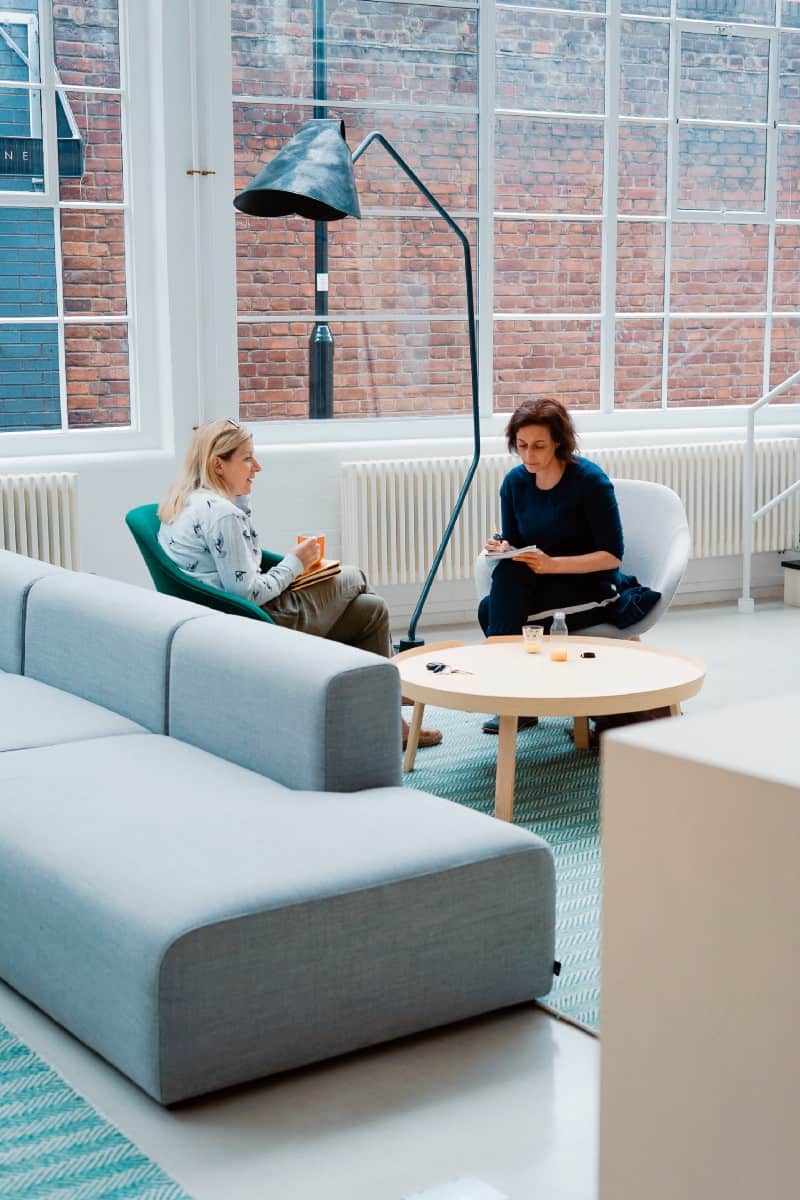Four reasons we believe human-centered design is relevant today.
Often, when words and ideas become ubiquitous — “disrupt,” “unicorn,” and “curate” are some potentially over-used words in the start-up and design space — we begin not to listen. We start to tune out. We identify these hot words as meaningless buzzwords.
But, that’s not always the case. It’s not all hot air. So, if you’ve heard the phrase human-centered design (pretty much synonymous with user-centered design) lately in the news or from colleagues or friends, try not to tune out. It’s worth it to stop, listen, and find out more.
The ideas, concepts, and processes behind human-centered design have been at work for decades. If you are curious about what human-centered design is and why it still matters today, read on.
Here are the four reasons we believe human-centered design is hyper-relevant today.
1. Human-Centered Design is Empathy-Based
There’s been a lot of discussions recently about how people don’t seem empathetic enough, especially in a world of nasty Twitter wars and divided political agendas. Most of us can agree that we need empathy more than ever.

We need to see the world from other people’s perspectives, which is what empathy is all about. (To be clear, empathy is not the same as sympathy, which is feeling sorry for someone. Psychiatrist and researcher Helen Riess describes empathy in the book The Empathy Effect like this: “We must understand the situation from the other person’s physical, psychological, social, and spiritual perspectives.”)
Human-centered design begins and ends with people.
What does empathy have to do with human-centered design? It’s right there in words themselves. Human-centered design begins and ends with people. It’s a process that is dedicated to creating products, processes, or experiences that are crafted from the perspective of the end-user.
Usually, this takes the form of starting any project or initiative with a deep dive into your users’ lives; typically, human-centered designers conduct user interviews to understand the perspective and needs of the people they’re designing for.
“While people are generally pretty well-attuned to their own feelings and emotions, getting into someone else’s head can be a bit more difficult. The ability to feel empathy allows people to “walk a mile in another’s shoes,” so to speak. It permits people to understand the emotions that others are feeling.” — from the article “What is Empathy?”
2. Human-Centered Design Embraces a Learner Mindset
Another essential thing about human-centered design, which is also related to empathy, is that it encourages people to embrace a “learner mindset” versus a fixed mindset. In the article“The Importance of Human-centered Design in Product Design,” Miklos Philips says: “Central to the human-centered design approach is the adoption of a learner mindset; a learner is optimistic and seeks understanding as a way to guide their actions.”
“Central to the human-centered design approach is the adoption of a learner mindset.” — Miklos Philip
When you come to a business or design challenge with a learner mindset, you are open to discovering new things, challenging biases, and thinking differently. This is in opposition to a judgmental mindset that immediately tries to categorize or place blame.

The article “7 Ways to Develop a Learner Mindset at Work” puts it this way: “Psychologists suggest that there are two ways of responding to any situation — judging and learning. If you have a judgmental mindset, you tend to want control over situations and focus your energy towards placing responsibility on someone else. The learner, on the other hand, tends to observe situations in order to fully understand them, reserving judgment for later.”
When you come to a business or design challenge with a learner mindset, you are open to discovering new things, challenging biases, and thinking differently.
Human-centered design, based on building empathy through talking and listening to users, is focused on identifying solutions through an open, non-judgemental approach. It’s rooted in a belief that this learner mindset will propel you to better, more innovative solutions.
3. Human-Centered Design Helps You Get It Right More Often
As mentioned above, an essential component of human-centered design is user testing. This means not only talking to customers at the beginning of a project but also engaging with your users to test ideas throughout the whole process.
The reason for user testing is this: we shouldn’t assume anything about how people will perceive our designs, or what they will like or dislike. A team engaged in a human-centered design process would talk to users early and often, to get their feedback on any designs or ideas. With this invaluable information in hand, teams can quickly iterate and get new ideas or products out in the world in a way that works for the end-user.

The article “A Comprehensive Guide To User Testing” explains why user testing so critical. Namely, it helps you pinpoint issues and respond before sinking design and development costs into your solution:“[User testing] helps you to identify any design issues before you get to the expensive part of the process when you reach the final build. It’s too late — and too expensive — to leave user testing until after you’ve built your product. At that point in the process, changes are incredibly costly.”
4. Human-Centered Design Drives True ROI
When companies and teams apply human-centered design, it’s not just because it’s a better way to work. Human-centered ways of working lead to better business outcomes, as well. Usability.gov cites these fascinating stats: “Dr. Susan Weinschenk notes that of those IT investments, up to 15% of IT projects are abandoned, and at least 50% of a programmers’ time during the project is spent doing rework that is avoidable. Following UCD best practices, helps to identify challenges upfront so that a solution can be found early.”

Additionally, the article “How To Calculate The ROI Of Your UX Activities” gives some real-life examples of companies who found incredible business returns from human-centered design activities: “For instance, Walmart’s redesign of its e-commerce site resulted in a 214% increase in visitors. Bank of America increased its online banking registration by 45% after a UX redesign of the process. IBM’s report on User-Centered Design notes that “every dollar invested in ease of use returns $10 to $100.”
Do you want to learn more about human-centered design?
These are the four reasons we think human-centered design is as relevant and compelling today as it’s ever been. If you’re curious to learn more or apply human-centered design to your work, get in touch.
Voltage Control facilitates design thinking workshops, innovation sessions, and Design Sprints. Please reach out at hello@voltagecontrol.com for a consultation.





